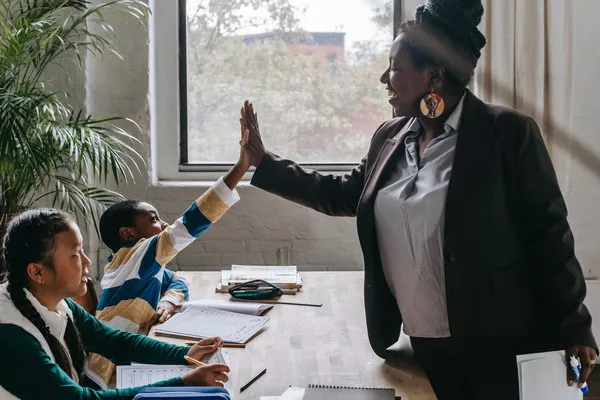Friendships, like any significant relationship, can face challenges and fractures over time. Whether due to misunderstandings, conflicts, or the natural ebb and flow of life, broken friendships can cause emotional distress. However, mending a broken friendship is not only possible but also an opportunity for growth and deeper connection. In this guide, we explore strategies and insights on how to mend a broken friendship, acknowledging the complexities involved in nurturing and revitalizing meaningful connections.
Reflecting on the Friendship
The first step in mending a broken friendship is reflecting on the dynamics and history of the relationship. Take the time to identify the specific issues or events that led to the fracture. Reflecting on the friendship allows for a deeper understanding of the root causes, providing a foundation for effective communication and resolution. Consider your own contributions to the challenges and be open to acknowledging areas where you might have played a role in the friendship breakdown.
Communication: The Cornerstone of Reconciliation
Effective communication is the cornerstone of any healthy relationship, and mending a broken friendship is no exception. Initiate an honest and open conversation with your friend about the issues that led to the fracture. Express your feelings, concerns, and perspectives in a non-confrontational manner, emphasizing your desire to understand their point of view. Active listening is crucial during this phase, allowing both parties to express themselves and fostering an environment of mutual understanding.
Apologizing and Forgiving: Repairing Emotional Bonds
Apologizing and forgiving are integral components of the healing process in broken friendships. If you recognize that your actions or words contributed to the fracture, offer a sincere apology. Acknowledge the impact of your behavior on the friendship and express genuine remorse. On the other side, be open to accepting apologies from your friend. Forgiveness does not mean forgetting, but it allows both parties to move forward without carrying the weight of past grievances. It creates a space for rebuilding trust and repairing emotional bonds.
See Also: What is a close friendship?
Setting Boundaries: Establishing Healthy Dynamics
Setting boundaries is crucial in mending a broken friendship and ensuring the establishment of healthy dynamics. Clearly communicate your needs and expectations for the relationship, and encourage your friend to do the same. Establishing boundaries helps prevent recurring issues and promotes mutual respect. It is an opportunity to redefine the parameters of the friendship, ensuring that both parties feel comfortable and secure in their interactions.
Cultivating Empathy and Understanding
Empathy plays a pivotal role in rebuilding a broken friendship. Cultivate an empathetic mindset by putting yourself in your friend’s shoes, understanding their feelings, and validating their experiences. Likewise, encourage your friend to express their emotions and perspectives. Developing a mutual understanding fosters compassion, strengthens emotional bonds, and paves the way for a more resilient friendship.
Quality Time and Shared Activities
Rekindling a broken friendship often involves investing time and energy in shared activities. Plan activities that you both enjoy and that hold positive memories from your past. Engaging in shared experiences can reignite the joy and connection that initially brought you together. Whether it’s revisiting a favorite hobby, exploring new interests, or simply spending quality time together, these shared moments contribute to rebuilding the fabric of your friendship.
Seeking Professional Guidance
In some cases, mending a broken friendship may benefit from professional guidance. If the issues are deeply rooted or if communication barriers persist, consider seeking the assistance of a therapist or counselor. Professional guidance provides a neutral space for both parties to express themselves, gain insights into the dynamics of the friendship, and work towards constructive solutions. A trained professional can offer valuable tools and strategies for navigating challenges and fostering a healthy, revitalized friendship.
Acknowledging Growth and Change
Friendships, like individuals, undergo growth and change over time. Acknowledge that both you and your friend may have evolved, and that the dynamics of the friendship might need to adapt accordingly. Embrace the positive aspects of personal growth, as it can contribute to a more mature and resilient friendship. Recognizing and celebrating the growth and change in both parties can foster a renewed appreciation for the unique qualities each brings to the relationship.
Learning from the Past
Mending a broken friendship provides an opportunity for reflection and learning from past experiences. Assess the challenges that led to the fracture and consider how both parties can implement positive changes moving forward. Identify patterns that contributed to the breakdown and commit to breaking those cycles. The willingness to learn from the past demonstrates personal and relational growth, laying the foundation for a more resilient and fulfilling friendship.
Building Trust Gradually
Rebuilding trust is a gradual process in mending a broken friendship. Trust is fragile and may take time to fully restore. Be patient with the process and focus on consistent, positive actions that demonstrate reliability and sincerity. Keep your commitments and be transparent in your interactions. Building trust gradually allows the friendship to regain its solid foundation and ensures that both parties feel secure in the connection.
Celebrate Milestones and Progress
Celebrate the milestones and progress achieved in the journey of mending a broken friendship. Acknowledge the efforts both parties have made, the positive changes implemented, and the growth experienced. Celebrating achievements, no matter how small, reinforces the commitment to the revitalized friendship. It serves as a reminder of the shared journey towards healing and the strengthened bond that has emerged from the process.
Conclusion
Mending a broken friendship requires a combination of self-reflection, effective communication, empathy, and commitment from both parties. It is a transformative journey that offers the opportunity for personal and relational growth. By cultivating open communication, setting healthy boundaries, and embracing the positive aspects of change, individuals can navigate the complexities of friendship repair. With patience, understanding, and a shared commitment to the process, broken friendships can be revitalized, fostering deeper connections and lasting bonds.
Related topics:

























